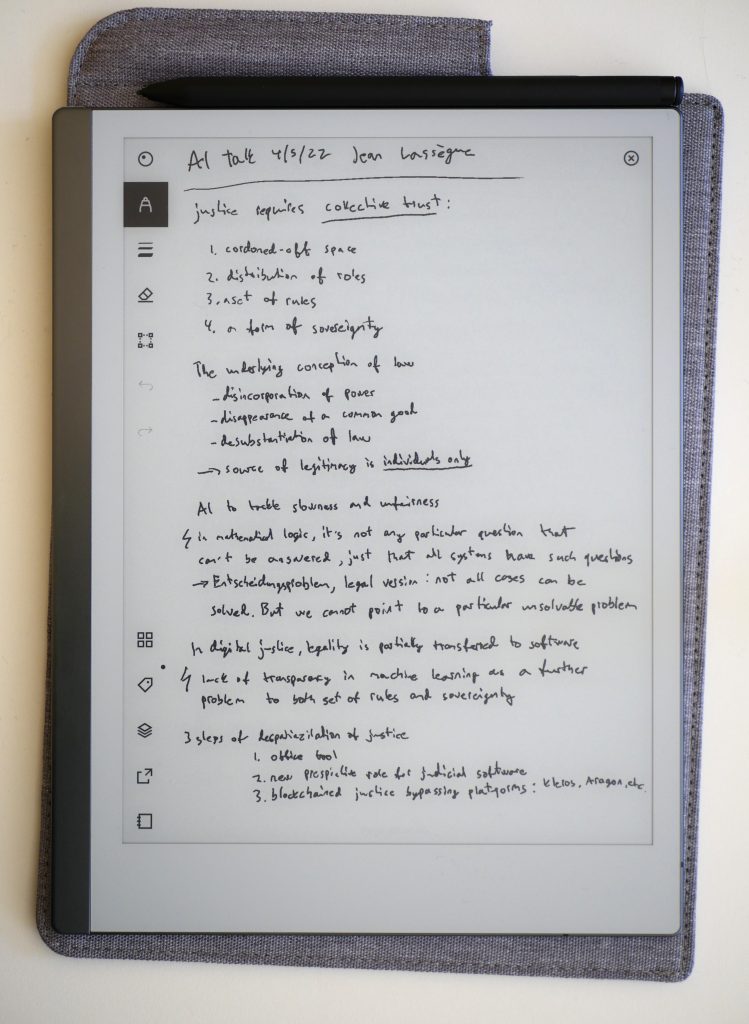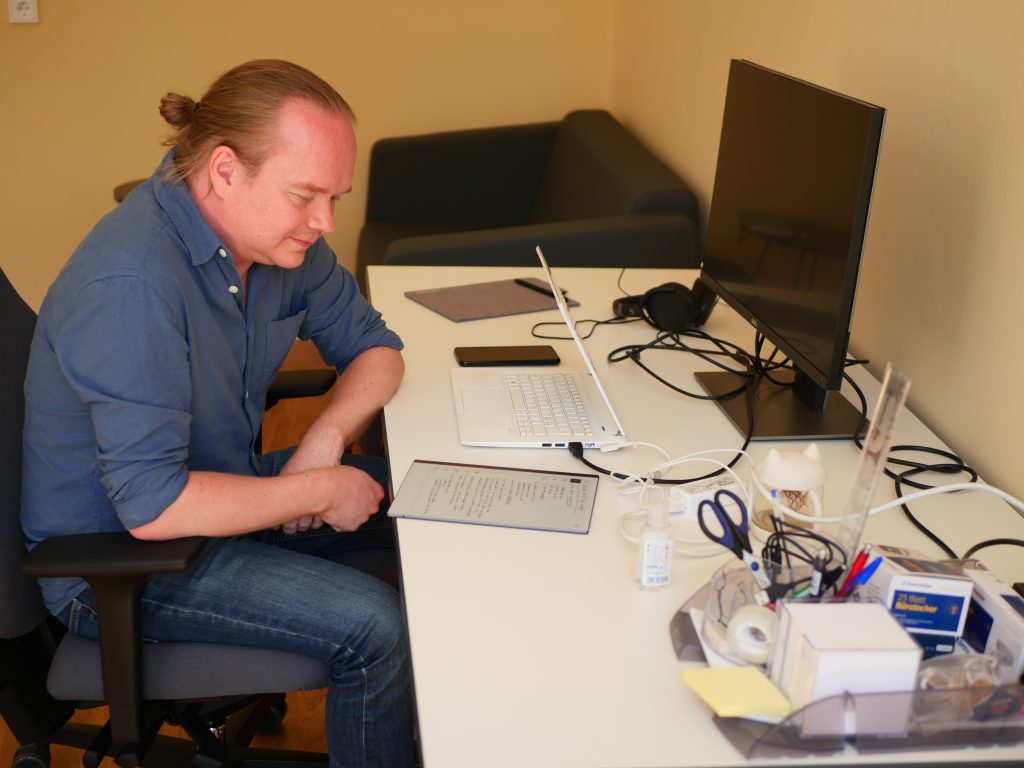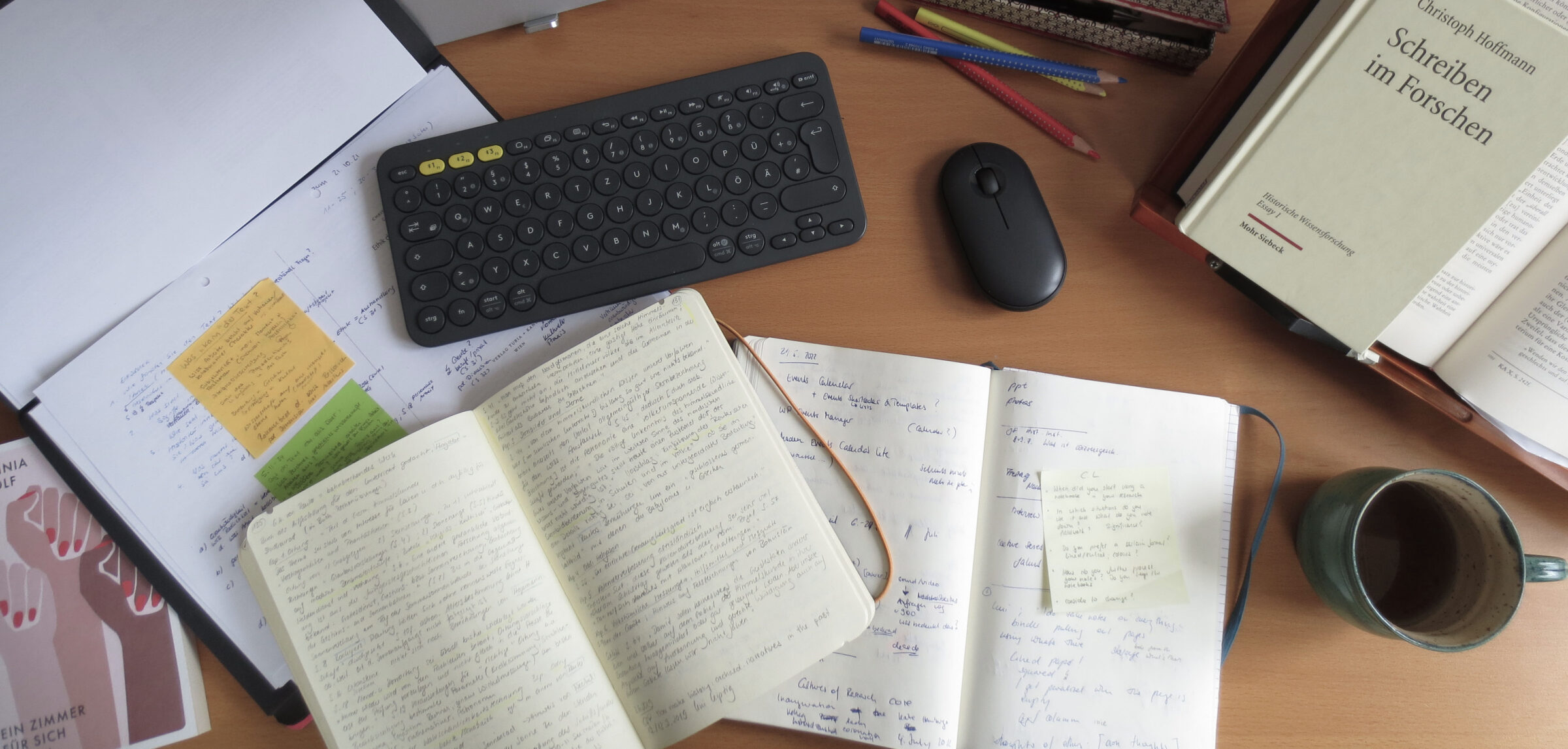Academic writing is a basic practice that does not start in writing up one’s research results for publishing. Right from the start of an idea for a research project, researchers are noting down things: thoughts, questions, observations, ideas. Let’s have a look at the often neglected but very central object that inhabits these very first materializations of research ideas: the notebook. How does the notebook of a researcher look like? How do practices of note taking change in the digital age? I asked some of the fellows at the Käte Hamburger Kolleg: Cultures of Research (c:o/re) about their habits of note taking.

Markus Pantsar
Markus Pantsar is a philosopher of mathematics and artificial intelligence at the University of Helsinki, Finland. As a senior grant researcher, he worked on the epistemology of mathematics and will continue to do so with a focus on arithmetic and geometrical cognition with a funding by the Finnish Cultural Foundation that starts in autumn 2022. In the meantime, Markus tackles questions of complexity, human cognition and intelligence with regard to the development of artificial intelligence, simulation and machine learning during his fellowship at c:o/re.
Stefanie Haupt: Markus, what is the most recent thing that you noted down in your notebook?
Markus Pantsar: [thinks for a short moment and checks his notebook] It was something I wrote down from last week’s workshop. I usually take notes only sparingly. They are mostly personal reminders of things that inspire me when listening to talks – for example names or books and papers.
Stefanie: Your notes are handwritten but on a digital devise, how does that work for you?

Markus: It works fine. I can either convert the pages to images or, and this is what I use mostly, the built-in AI transforms my handwriting to searchable type-written text. It just needs some editing afterwards. The software does not recognize, for example, names so easily. But otherwise, it works well for me.
Stefanie: And what happens after you convert the notes?
Markus: The software turns them into pdf-documents that I keep in different folders, for example, for conferences I attended. I also have a folder for my fellowship here in Aachen. Typically, I remember better where I heard interesting thoughts than when I heard them. Therefore, my folders follow a structure based on places rather than on pure chronology. I save everything in the cloud because I can see myself pouring coffee over my stuff [smiles].
Stefanie: I am looking at your desk right now and I see hardly any paper. When did you switch to the digital? Was it a conscious decision?
Markus: Yes, definitely. For me this is a very recent development. I bought this notebook in preparation for my fellowship in Aachen. I wanted something like this for a long time: a devise to write and to read digital papers and books on. Previously, I used to print articles and write into paper notebooks and they kept piling up in the bookshelf. But as a researcher you often have to move and switch places. I liked the idea of carrying my research in just one bag.

Stefanie: This is close to the ideal of the paperless office, which is also very ecological. Do you also see disadvantages compared to the analogue notebook?
Markus: Well, regarding the ecological factor you need to consider the production of such an electronic devise. Disadvantages – there aren’t many: The notebook won’t transform special symbols that the software does not recognize. For example, I use a kind of flash-symbol to mark points of disagreement with the arguments of others. Also, the notebook does not display colours, so whenever I read a paper and there is a coloured image, for example a graphic depiction of different activation areas in the brain, I am missing some of the information there. One disadvantage is also that for such a simple machine, it is still very expensive. It does not have internet access, aside from the cloud function for the files – but this is something I appreciate, actually: I can sit on the couch reading and not get distracted.
Stefanie: Did switching to digital change your practice of note taking somehow?
Markus: Now that we are talking about it, I would say: Yes, it did! Unlike with analogue notes, I have to go through the digital notes again to edit them after converting the text. This is necessary to find names and other keywords via the search function later. It has already become a kind of routine for me. And it also often prompts me to write down more about what I heard and inspires me to think deeper about it. I would say that now I am working more with my notes than before. But there is also a qualitative difference, in that my notes end up being more polished and easier to apply. I don’t think I will switch back to the analogue.
Stefanie: Thank you very much, Markus, for a short glimpse into your notebook!



